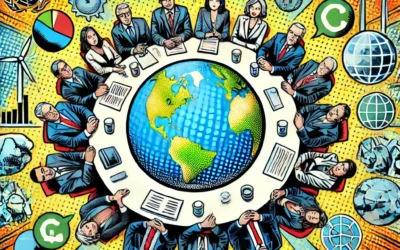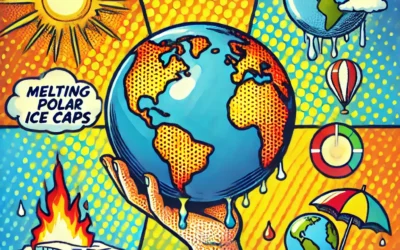Net Zero 2050: A Global Goal for a Sustainable Future
Net Zero 2050 is a global goal to reach net zero greenhouse gas emissions by the year 2050. This means that the amount of greenhouse gases emitted into the atmosphere is equal to the amount removed or offset by natural or human-made means.
Net Zero 2050 is essential to limit the global temperature rise to 1.5°C above pre-industrial levels, as agreed by the Paris Agreement. In this article, we will explain why Net Zero 2050 is important, what are the main challenges and opportunities, and what are the actions and solutions needed to achieve it.
Why Net Zero 2050 Is Important
Net Zero 2050 is important for several reasons, such as:
Avoiding the worst impacts of climate change: Climate change is already affecting the environment and the society in various ways, such as rising sea levels, melting glaciers, extreme weather events, biodiversity loss, food insecurity, and health risks.
If greenhouse gas emissions continue to rise at the current rate, the global temperature could increase by more than 4°C by the end of the century, leading to catastrophic and irreversible consequences. Net Zero can help avoid these impacts by keeping the global temperature within a safe range.
Creating a cleaner and healthier future: Net Zero 2050 can also create a cleaner and healthier future for the planet and the people, by reducing air pollution, enhancing natural resources, and improving well-being. By switching to clean and renewable sources of energy, such as solar, wind, or hydro, Net Zero can reduce the emissions of harmful pollutants, such as particulate matter, nitrogen oxides, or sulfur dioxide, which can cause respiratory diseases, cardiovascular diseases, and premature deaths.
By restoring and protecting the natural carbon sinks, such as forests, wetlands, or soils, Net Zero can enhance the ecosystem services, such as water regulation, soil fertility, and biodiversity conservation. By adopting low-carbon lifestyles and behaviors, such as driving less, flying less, eating less meat, and consuming less, Net Zero can improve the quality of life, happiness, and equity of the society.
Driving innovation and economic growth: Net Zero 2050 can also drive innovation and economic growth, by creating new markets, industries, and jobs, and by increasing competitiveness and efficiency. By investing in green technologies and solutions, such as electric vehicles, energy efficiency, or carbon capture, Net Zero can create new opportunities and challenges for the private sector, and stimulate research and development, entrepreneurship, and collaboration.
By improving energy security and resilience, Net Zero can reduce the dependence and vulnerability of the economy on fossil fuels, and lower the costs and risks associated with the energy supply and demand. By enhancing the social and environmental performance, Net Zero can increase the attractiveness and reputation of the economy, and attract more investment and trade.
What Are the Main Challenges and Opportunities
Net Zero 2050 is an ambitious and complex goal, which faces several challenges and opportunities, such as:
Data and information: The data and information on greenhouse gas emissions and removals are often incomplete, inconsistent, and incomparable, making it difficult to measure, monitor, and evaluate the progress and performance of Net Zero.
The data and information are also often inaccessible, incomprehensible, and inapplicable, making it difficult to communicate, consult, and cooperate with the relevant stakeholders and the public. However, the data and information can also be improved and enhanced, by applying common standards and methodologies, by using digital tools and platforms, and by involving the local communities and experts in the data collection and analysis.
Policy and regulation: The policy and regulation on Net Zero 2050 are often inadequate, incompatible, and ineffective, making it difficult to balance, align, and coordinate the environmental, economic, and social objectives and interests.
The policy and regulation are also often uncertain, unstable, and unpredictable, making it difficult to plan, implement, and adapt the actions and solutions for Net Zero. However, the policy and regulation can also be improved and enhanced, by setting clear and ambitious targets and timelines, by implementing and enforcing strong and flexible incentives and sanctions, and by engaging and empowering the public and the private sector in the policy-making and implementation processes.
Technology and innovation: The technology and innovation for Net Zero 2050 are often constrained, conflicted, and contested, making it difficult to generate, protect, and transfer green technologies and solutions. Technology and innovation are also often complex, dynamic, and diverse, making it difficult to manage, support, and enhance green technologies and solutions. However, technology and innovation can also be improved and enhanced, by increasing investment and funding, by fostering collaboration and cooperation, and by addressing the social and ethical issues and impacts of green technologies and solutions.
What Are the Actions and Solutions Needed
Net Zero 2050 requires urgent and radical actions and solutions from all sectors and levels of the society, such as:
Reducing Emissions: This involves cutting back on the use of fossil fuels and transitioning to cleaner, renewable energy sources like solar, wind, or hydro power. It also means improving energy efficiency, conserving resources, and adopting eco-friendly habits such as driving less, flying less, reducing meat consumption, and overall consuming less.
This approach is considered the most effective and dependable way to combat climate change because it stops greenhouse gases from entering the atmosphere in the first place, without relying on uncertain methods like carbon offsetting.
Removing Emissions: This approach focuses on capturing and storing greenhouse gases that are already in the atmosphere, and revitalizing natural carbon sinks like forests, wetlands, or soils, which naturally absorb and store carbon.
While removing emissions is an important supplementary method to fight climate change, it doesn’t replace the need to reduce emissions. It can help decrease the existing stock of greenhouse gases and enhance the resilience of ecosystems and society. However, it’s limited by available technology and land, and may have trade-offs and side effects on the environment and society.
Offsetting emissions: Offsetting emissions means compensating for the greenhouse gas emissions that cannot be reduced or removed, by investing in projects that reduce or remove greenhouse gases elsewhere, such as tree planting, renewable energy, or energy efficiency.
Offsetting emissions is a last resort and temporary way to achieve Net Zero 2050, as it does not address the root cause of the emissions, and as it may not result in real, measurable, and additional reductions or removals of greenhouse gases. Offsetting emissions should only be used when there are no other alternatives, and when the offsetting projects meet certain criteria and standards, such as additionality, permanence, and co-benefits.
Conclusion
Net Zero 2050 is a global goal to reach net zero greenhouse gas emissions by the year 2050. This means that the amount of greenhouse gases emitted into the atmosphere is equal to the amount removed or offset by natural or human-made means. Net Zero 2050 is essential to limit the global temperature rise to 1.5°C above pre-industrial levels, as agreed by the Paris Agreement. Net Zero 2050 is important for avoiding the worst impacts of climate change, creating a cleaner and healthier future, and driving innovation and economic growth.
Net Zero 2050 faces several challenges and opportunities, such as data and information, policy and regulation, and technology and innovation. Net Zero 2050 requires urgent and radical actions and solutions from all sectors and levels of the society, such as reducing emissions, removing emissions, and offsetting emissions. Net Zero 2050 is an ambitious and complex goal, but it is also a necessary and achievable one if we act now and act together.
Learn more:






